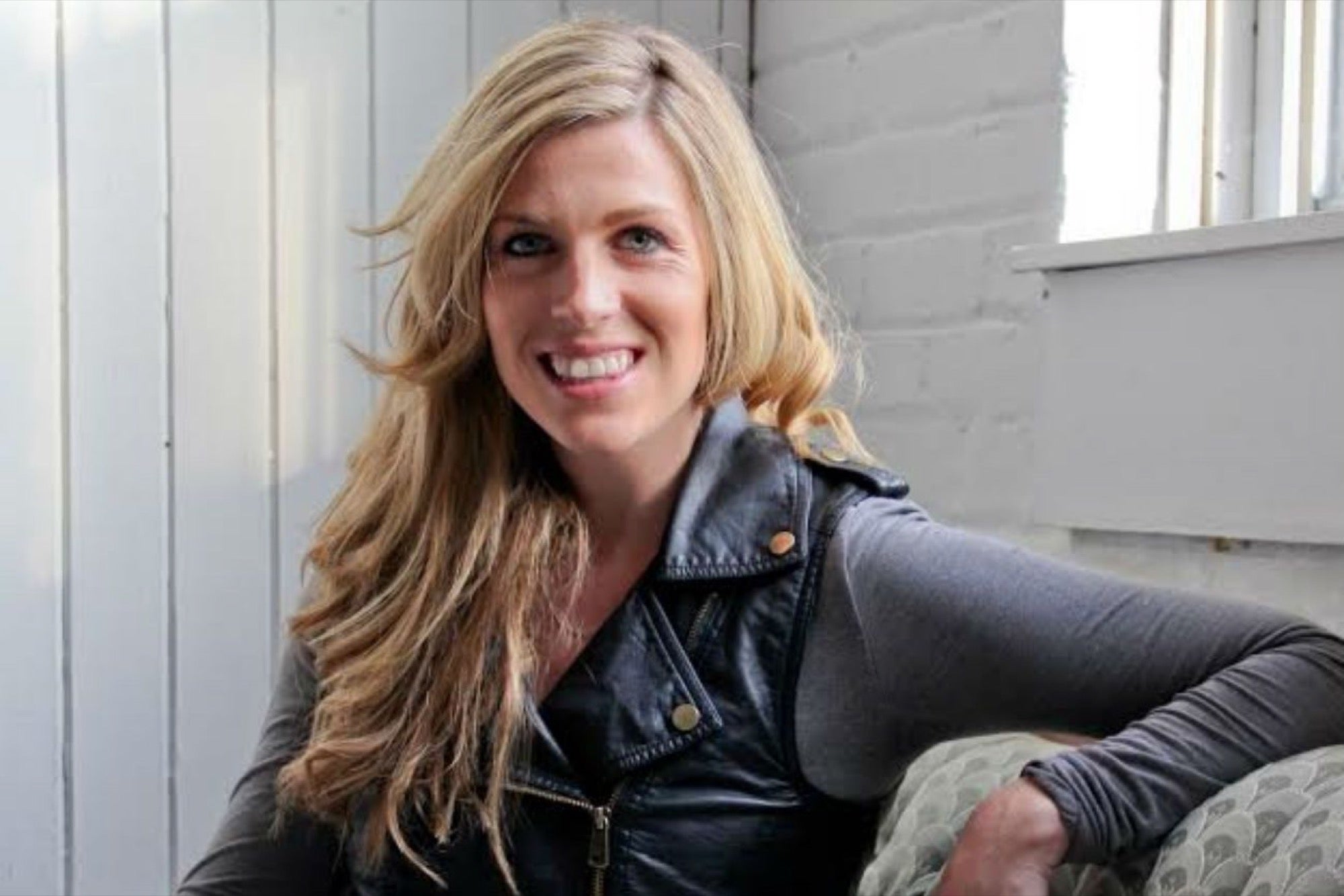Why This Intimate Apparel Founder Walked Away From a Wholesale Business That Was 700 Stores Strong Knix founder Joanna Griffiths built a company to serve women -- all women. When her wholesale partners were failing her customers, she made a drastic pivot.

In the Women Entrepreneur series My First Moves, we talk to founders about that pivotal moment when they decided to turn their business idea into a reality -- and the first steps they took to make it happen.
Joanna Griffiths was 26 years old, working in the media world, when a casual conversation with her mom -- a doctor and mother of four -- shook her. "We were talking about the realities of being a woman," she says. "The changes that happen at different stages -- pregnancy, post-pregnancy, later in life. I wasn't married, I didn't have kids, so none of this stuff was on my radar. But that's why it stuck with me." She particularly couldn't get over the fact that for many women, incontinence is a part of daily life. "This idea that women pee themselves when they laugh or sneeze or do a jumping jack, I never realized that was a thing," she says. "You always hear people say, 'Oh, I laughed so hard I peed.' But I didn't know that was a real thing." Nine years later, Griffiths is out to fix the problem as the founder of Knix, which makes leakproof underwear, among other undergarments. Here's how she did it.
Step 1: Put your ear to the ground.
After her aha moment, Griffiths did…absolutely nothing. "For two years," she says, "I just told people I had a business idea but never though it would be real." She enrolled in business school with the intention of getting a big-deal executive job at a media company and instead found herself refocused on this idea. "Business school gave me the space to think about it," she says. With no experience in business or apparel, Griffiths started talking to women -- wherever she could find them. "I did a lot of digital anthropology, which is a polite way of saying "online creeping,'" she says. She visited chat rooms, and other digital forums, and found the topic of incontinence being discussed in two places: mom forums and chat rooms about intense exercises, such as running and CrossFit. "I was living in Singapore at the time, and I just spent two months researching. My friends would go to clubs, and I'd be in the library on my laptop talking about incontinence issues."
Related: How the Rifle Paper Co. Founders Turned a Side Hustle Into a Thriving Lifestyle Brand.
Step 2: Understand the existing market.
Griffiths bought every product she could find that promised to address these issues. "I mapped them out and was like, How do these products line up with what women have told me they want?" she says. A consistent issue was that most of these items were function first. "They were poorly designed, and they were marketed to an older demographic. It all felt really dated, like this product category should be veiled in secrecy. No one was acknowledging that women wanted to have a conversation about this." It reinforced what she already suspected: A fashionable product that was rooted in functionality would be a hit.
Step 3: Map out your own product.
She made a list of must-have features -- comfy, cute, seamless, quick-dry, leak-resistant, odor-resistant -- and buckled down thanks to a $20,000 prize she won during a school business-venture competition. "I started doing what I like to call product hacking," Griffiths says. "I look around for different components. For leak resistance, for example, I looked to the cycling industry. For odor resistance, I looked at what Lululemon and Nike were developing. For seamless construction, I shopped around. It allowed us to move faster than if I had tried to develop it all on my own." To bring the puzzle pieces together, Griffiths started reaching out to brands, manufacturers and suppliers, and asked for connections to folks who could help build this product. "It led me to factories in Korea, and they're still who we work with today."
Related: How Lauren Bush Lauren Hustled a Customs Agent to Save the First Order of FEED Bags.
Step 4: Find your customers.
Crowdfunding was just taking off when Knix was ready to launch, and Griffiths raised $60,000 to get her brand out there. The campaign was a success -- so much so that it empowered her to make a bold pitch, to Hudson's Bay, a Canadian department store chain. Hudson's Bay went for it, and she was elated, but her success set her up for some hard, hard work. "We completely underestimated the strategic shift in business and operations I just made by committing to a department store," she says. "We were a three-person team. We had to grow. We had to redevelop our supply chain. We had to learn about all these regulations that I had never heard about before." But they made it work, and three years later, Knix were sold in 700 retail stores across North America.
Related: She Built Her Startup With No Money or Team. How the CEO of Piazza Did It.
Step 5: Find a better way to reach your customers.
To launch their second product, a seamless bra, Griffiths returned to crowdfunding, and this time raised a whopping $1.6 million. It gave her the freedom to examine some parts of the business, and what she was hearing from some customers alarmed her. "We built this brand around inclusivity and making women feel confident, but we can't tell our retailers what to buy," Griffiths said. "We started hearing from our customers that they'd driven to three different stores to find our product, and they were either sold out or only carried smalls and mediums, and our customers who were large or extra large walked away feeling like crap. That broke the camel's back. We were unintentionally creating a negative experience." So she started the tricky process of exiting the wholesale game and taking her business direct to consumers. "It's hard walking away from relationships with wholesalers who've supported you since day one," she says. "But you can only do so many things well. This shift allowed us to focus on our strengths, our customers and what's best for our team."









